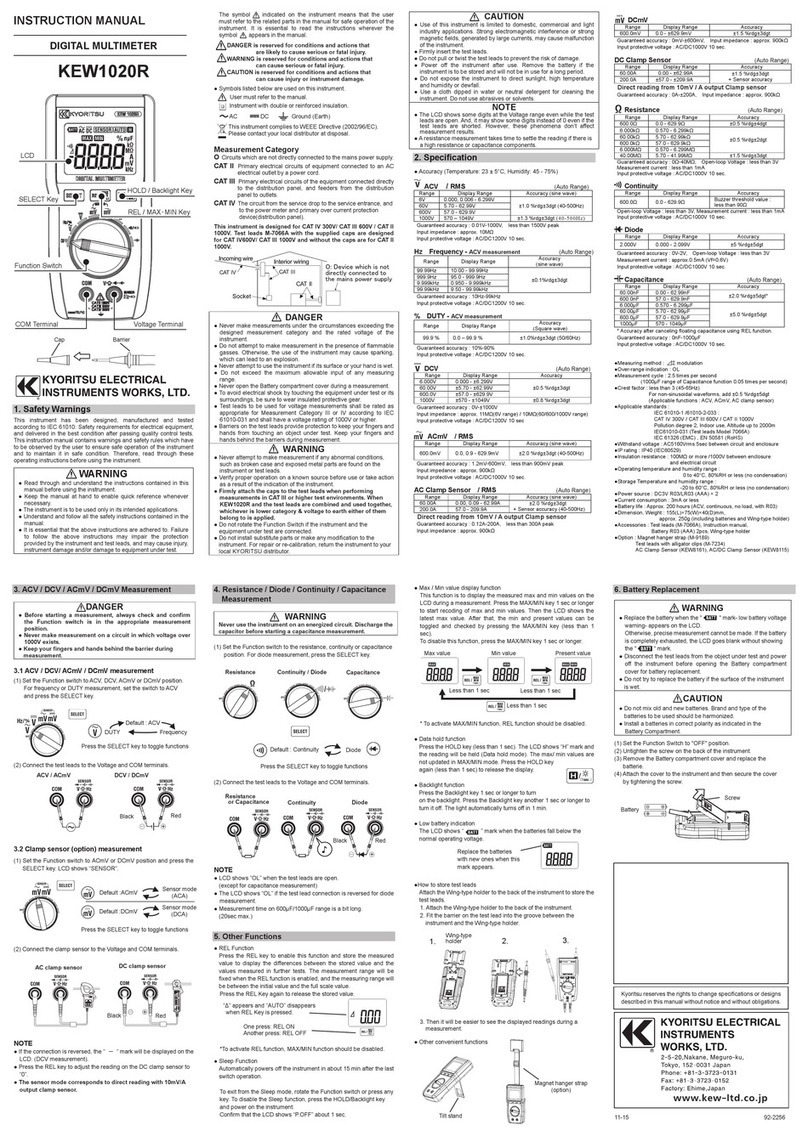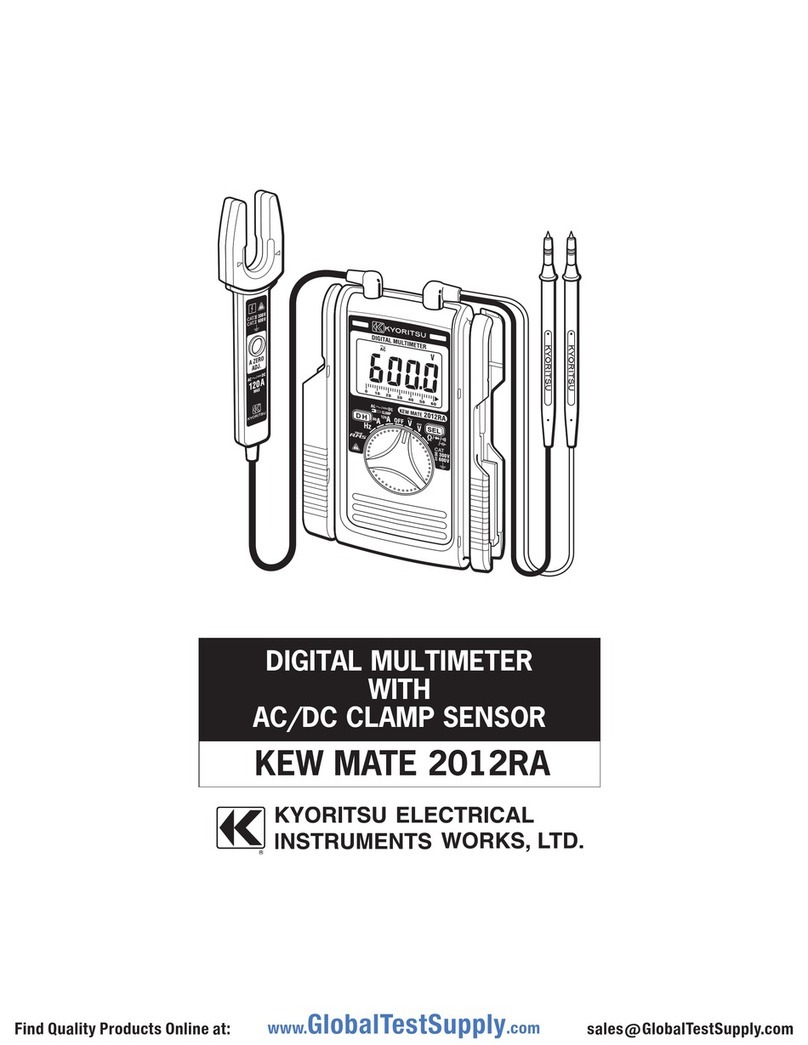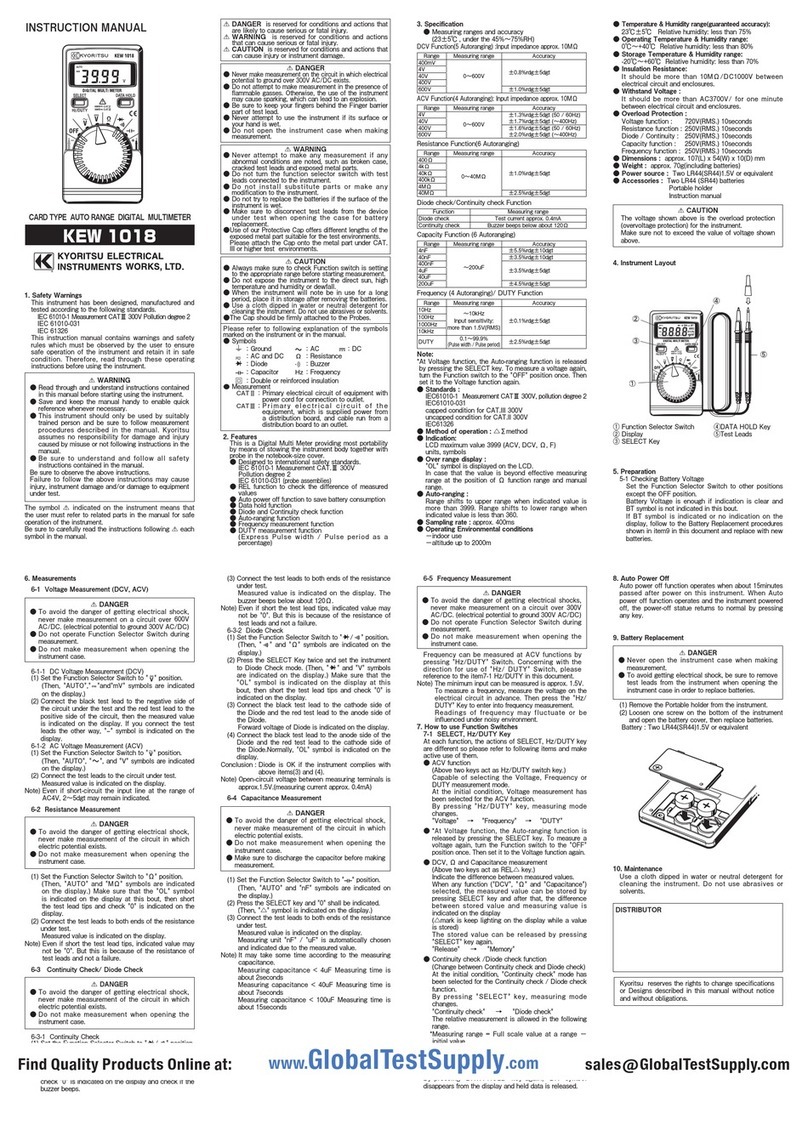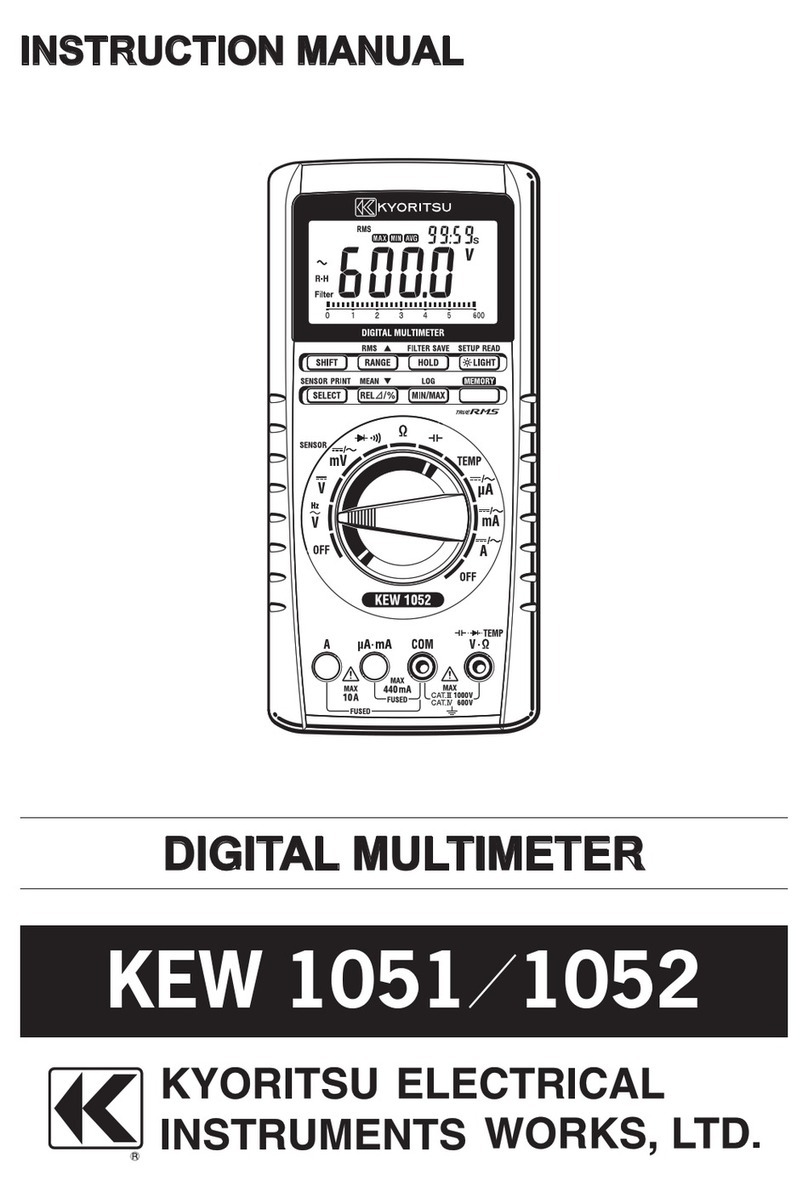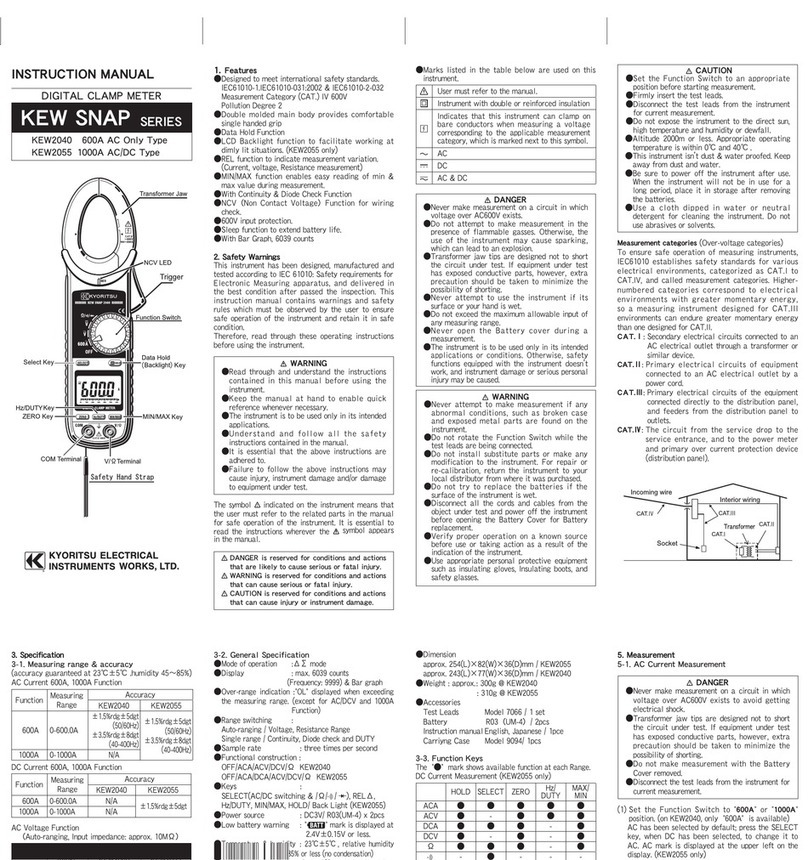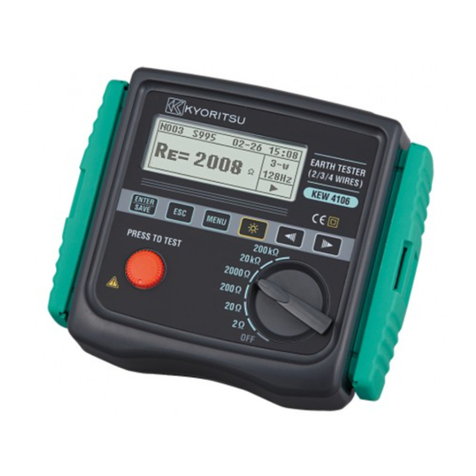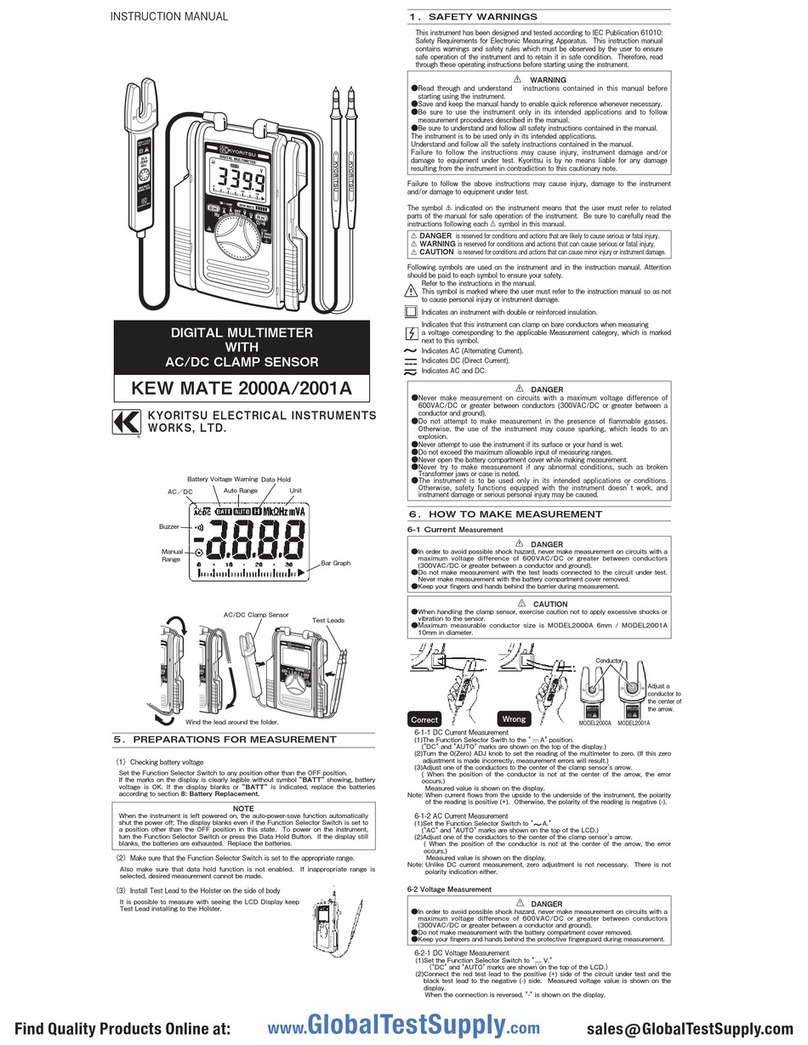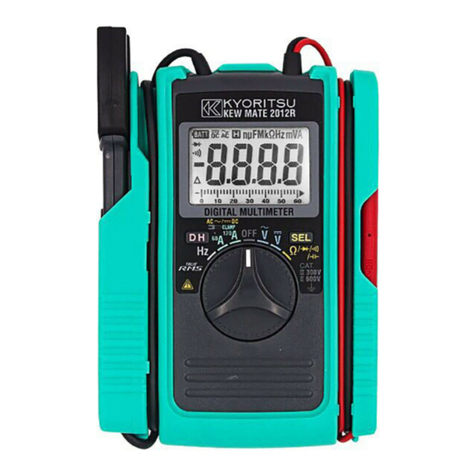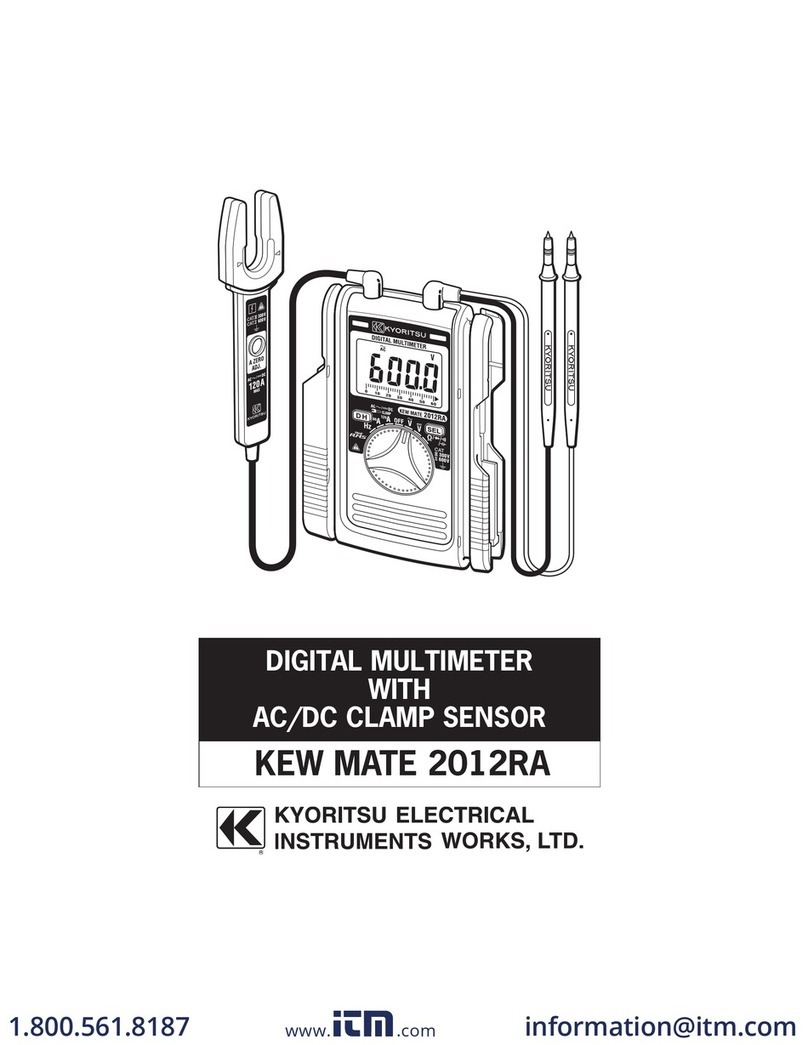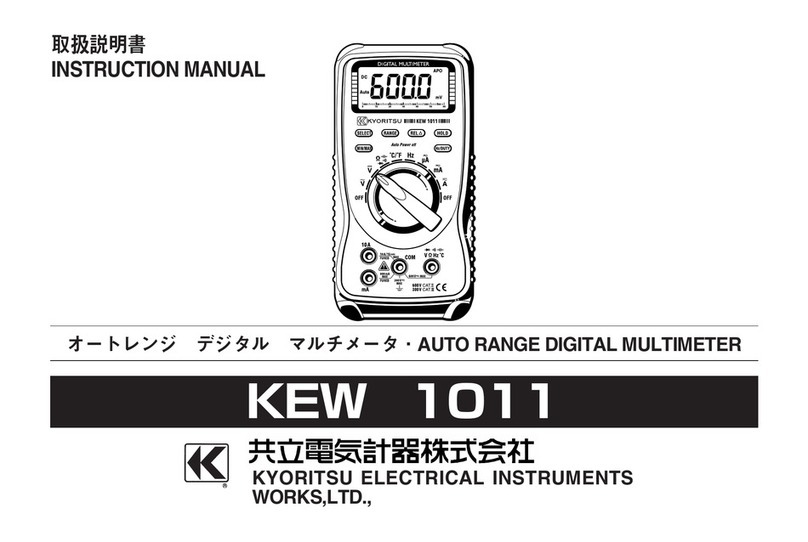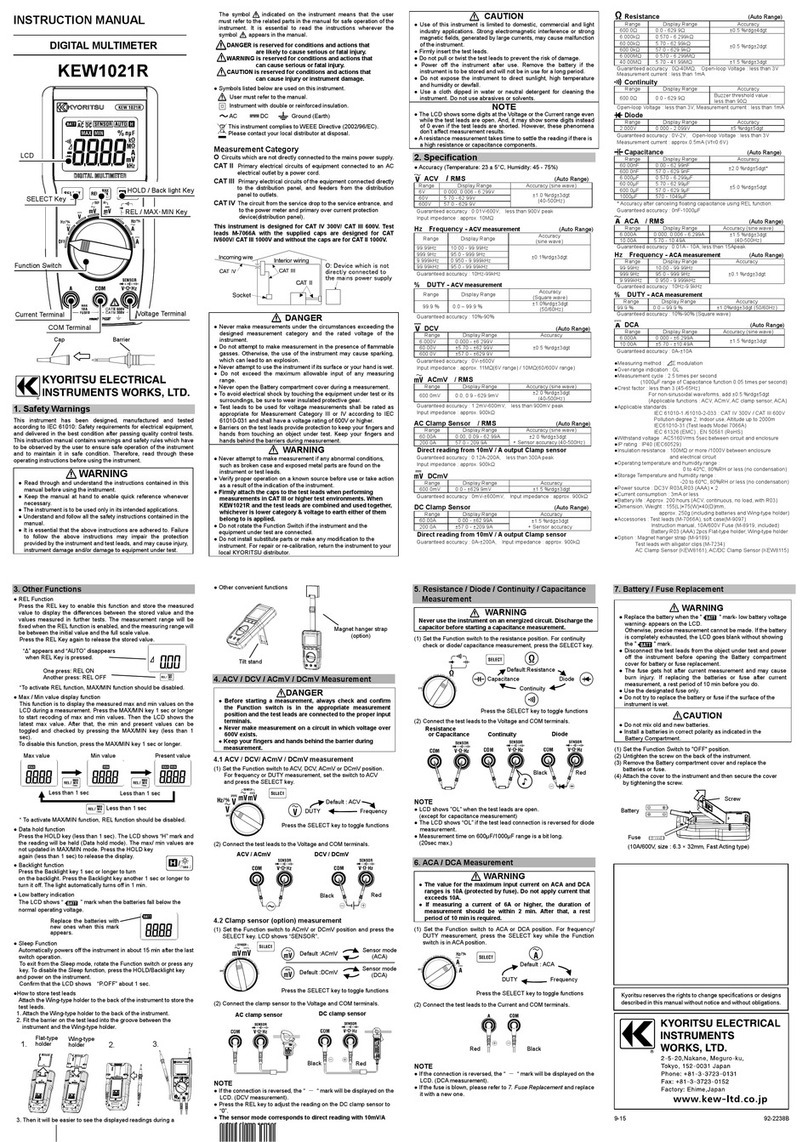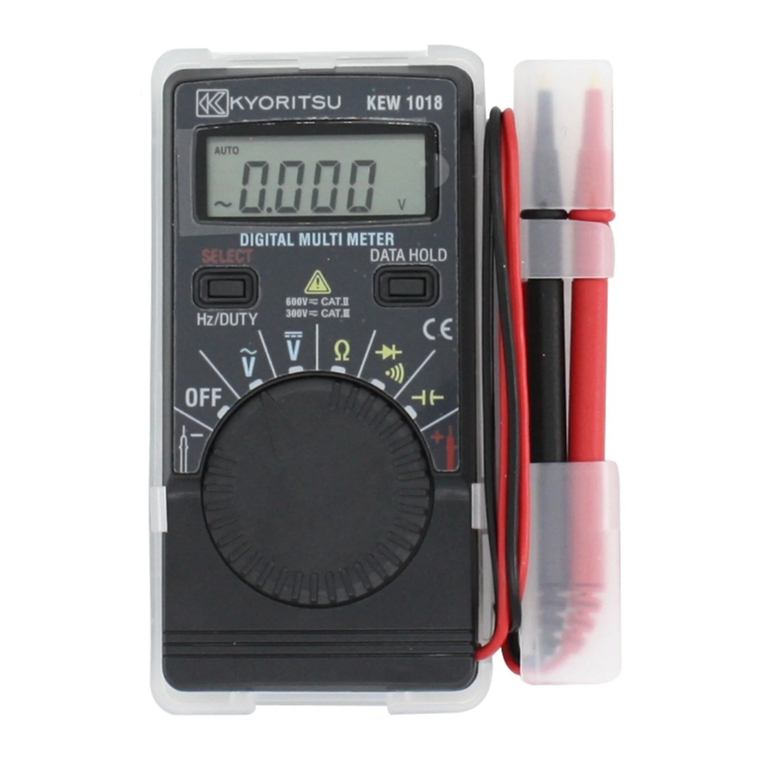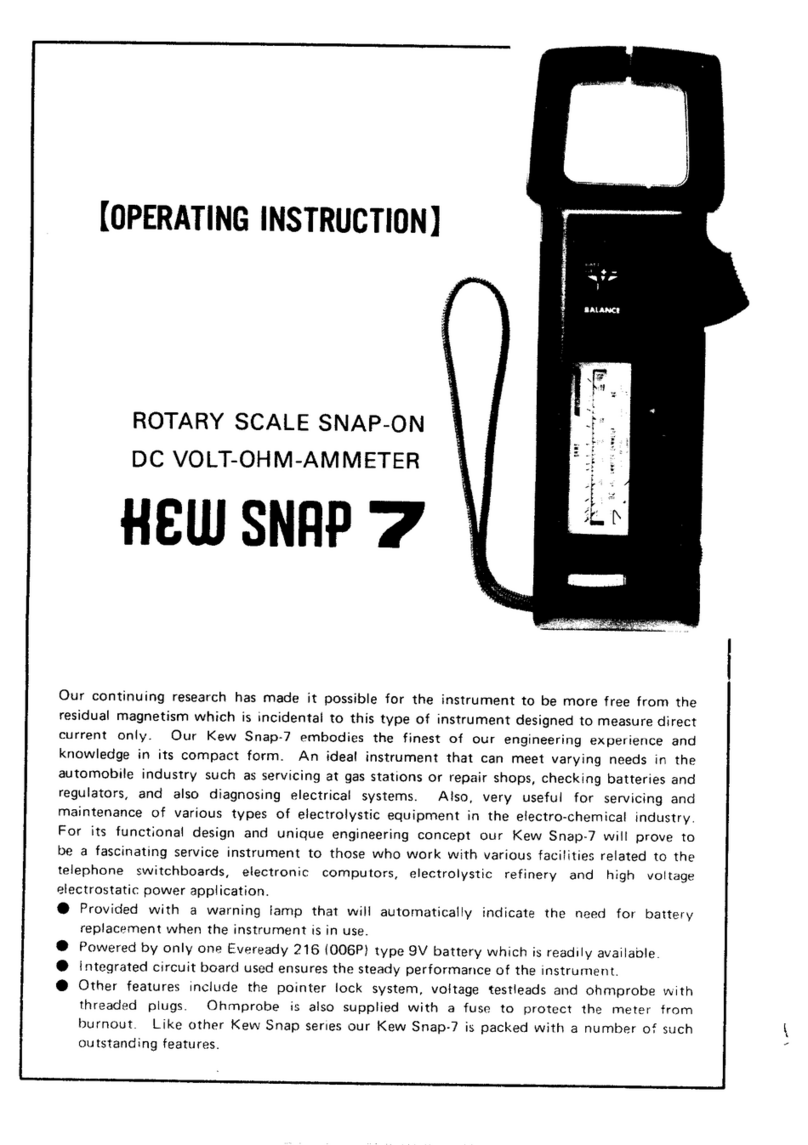— 18 —
(2) Set the Function Selector Switch to the appropriate "uA" or "mA" position.
In case that the measurement current is 3999uA or less, set the Function Selector Switch to "uA" position, and it is 399.9mA or less, set the
Function Selector Switch to "mA" position.(Then, "AUTO", and "uA"or "mA" symbols are indicated on the display.)
(3) Power off the circuit under test.
(4) Connect the black test lead to the negative side of the circuit under the test and the red test lead to the positive side of the circuit so the instrument
is in the series with the circuit.
(5) Power on the circuit under test.
(6) Measured value is indicated on the display.
If you connect the test leads the other polarity, " ー " symbol is indicated on the display.
6-2-2 DC Current Measurement (up to 10A)
CAUTION
● For safety sake, the measuring time on 10A range should be 15 seconds or less. Interval time between 2 measurements should be greater than 15 minutes.
If you carry on making measurement continuously over 15 seconds, or make measurement in short interval time, it may cause error of measurement and
instrument damage.
(1) Insert the black test lead plug into COM terminal and the red test lead plug into the A terminal.
(2) Set the Function Selector Switch to the "A" position.(Then, "AUTO", and "A" symbols are indicated on the display.)
(3) Power off the circuit under test.
(4) Connect the black test lead to the negative side of the circuit under the test and the red test lead to the positive side of the circuit so the instrument
is in the series with the circuit.
(5) Power on the circuit under test.
(6) Measured value is indicated on the display.
If you connect the test leads the other polarity, " ー " symbol is indicated on the display.
6-2-3 AC Current Measurement (up to 400mA)
(1) Insert the black test lead plug into the COM terminal the red test lead plug into the mA terminal.
(2) Set the Function Selector Switch to the appropriate "uA" or "mA" position.
In the case of the measurement current is 3999uA or less, set the Function Selector Switch to "uA" position, and it is 399.9mA or less, set the
Function Selector Switch to "mA" position.(Then, "AUTO", and "uA"(or "mA") symbols are indicated on the display.)
(3) Set the instrument to AC mode by pressing SELECT Key.(Then, "AC" symbol is indicated on the display.)
(4) Power off the circuit under test.
(5) Connect the test leads to the circuit under test so the instrument is in the series.
(6) Power on the circuit under test.
(7) Measured value is indicated on the display.
6-2-4 AC Current Measurement (up to 10A)
CAUTION
● For safety sake, the measuring time on 10A range should be 15 seconds or less. Interval time between 2 measurements should be greater than 15 minutes.
If you carry on making measurement continuously over 15 seconds, or make measurement in short interval time, it may cause error of measurement and
instrument damage.
(1) Insert the black test lead plug into the COM terminal and the red test lead plug into the A terminal.
(2) Set the Function Selector Switch to "A" position.(Then, "AUTO" and "A" symbols are indicated on the display.)
(3) Set the instrument to AC mode by pressing SELECT Key.(Then, "AC" symbol is indicated on the display.)

